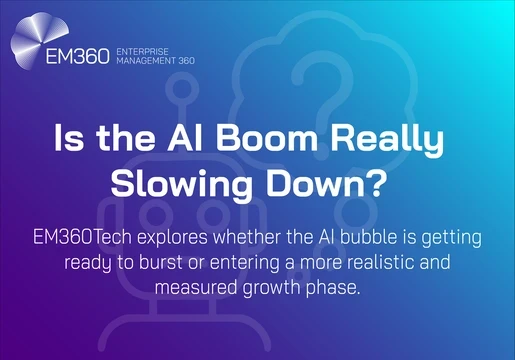
What new forms of customer interaction does AI facilitate?
Business is competitive. Companies everywhere are fighting to retain existing customers and bring in new ones. In a world with so many alternatives, it's excruciating to build genuine relationships. Brands and customers alike struggle to establish trusting relationships. Furthermore, the wide availability of online channels where customers can discuss the products and services they use puts more strain on these already shaky relationships. Don’t despair yet. Luckily, there are ways to enable customers to interact with a brand at their convenience. Soon, audio and visual interactions will be the key to build genuine, long-lasting customer relations.
Videos encode more information than text. Historically, written words have been the standard for recording and transmitting data. We relied on printed materials mostly due to a lack of technology capable of storing and transmitting images and sounds. A picture, not to mention a video, is far more potent for storing and transmitting information when compared to text. First, visual content simultaneously provides information about the environment and the participants, as well as the objects of interest. Next, by arranging a set of pictures connected into a sequence, we automatically have a notion of elapsed time. Finally, adding sounds to this time lapse, we add at least an extra layer of information. Thus, visual content is far more efficient to disseminate information than other media.
Consumers are impatient, and they want to consume as much information as possible in as little time and space as possible. Also, our environment is not helping the situation either. Over the last few years, there was an explosion of devices, gadgets, and apps that 'scream at us' to use them – plus, the amount and the variety of content available online. In this context, text-based communication is far from ideal. Studies showed that people retain about 10% of the information when read. In contrast, our brains remember approximately 95% of the message presented in a video form. As a consequence, it is a lot easier for us to pay attention to visual stimuli.
A conversation is a two-way street. Customers want information all the time, but they also want to share their opinions about the products and services they use. What is the easiest way for them to do that? By now, you can guess: record video to voice their views and opinions. If you think your customers are not doing it, then ask your insights team to compile a report of the top mentions of for your products on social media. Chances are they will surprise you. More, a quick search reveals that Facebook alone has over 8 billion video views per day. These data go to show that people and companies are producing video content. Thus, it is only natural that they will soon expect to communicate with brands through videos.
Search engines will soon index all video content making it searchable. We see this already happening today with about 80% of all internet traffic being video in 2018. Current search applications use keywords, description, and other metadata to catalogue visual content. With the advent of computer vision and speech processing technologies, we will transcribe speech, images, and videos (Google was already able to automatically annotate pictures with 94% accuracy back in 2016). Then, natural language processing and classification algorithms group and index audio and visual content with increased efficiency. Finally, the same systems translate spoken queries into text. These queries match to existing content in a database resulting in conversational user interactions.
While we transition to video content, how do you make sure you connect with your customers? Luckily, you are not alone. Intelligent systems are here to help. Machine intelligence developed over the years, and soon, they will be a lot better at processing video content. Computer systems can scan the internet for mentions of your brand on social media. When they have a hit, artificial intelligence algorithms process the content and then recommend you a series of actions to take. Soon, these systems will even respond to mentions if they consider it necessary.
In conclusion, voice interfaces and video content will soon become the primary way in which customers interact with businesses. Customers will interact with a brand in real time about their products and services. Voice interfaces like Alexa, Siri, or Cortana will enable customers to talk to a brand. Video and speech processing algorithms will further support that interaction either via intelligent chatbots or other interfaces that understand consumers’ pains, wants, and needs. As far-fetched as it sounds, this is not a sci-fi scenario. It will happen in the next 3-5 (maybe ten) years. Thus, for brands to maintain and establish new long-lasting relationships, they need to support audio and video conversations with their clients as soon as possible.







Comments ( 0 )